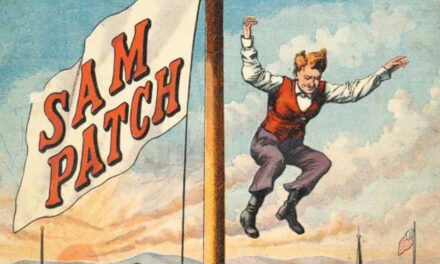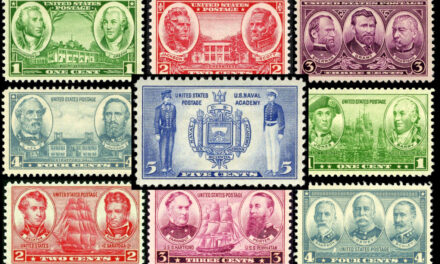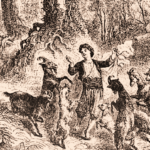
Coffee Rationing for U.S. Civilians in World War II
Are you a coffee drinker? How much coffee do you drink? Could you get by with half as much? That’s what American civilians on the home front had to do during eight months of U.S. coffee rationing in World War II.
Before the war, Americans were drinking more coffee than ever before. Coffee consumption in the United States amounted to about 20 pounds for every adult. Coffee was part of popular culture. In 1932, Fred Waring’s Pennsylvanians had a hit with Irving Berlin’s fox trot “Let’s Have Another Cup of Coffee” from the musical Face the Music. Both Glenn Miller and Sammy Kaye released cover versions in 1942. Meanwhile, in 1940, the Ink Spots scored a hit with their ode to coffee “Java Jive.”
Americans’ love of coffee did not diminish with the onset of the war, either among the soldiers overseas or among the folks at home.
From September 1941 to April 1942, First Lady Eleanor Roosevelt had a popular weekly radio show on NBC’s Blue Network called Over Our Coffee Cups. Her broadcast was sponsored by the Pan American Coffee Bureau, a trade organization representing eight Latin American coffee-producing countries.
Each show began with an introduction from the sponsor, culminating with the slogan “Get more out of life with coffee!” Some shows also featured coffee endorsements from popular figures like movie star Claudette Colbert, bandleader Tommy Dorsey, and All-Star baseball player Joe Gordon.
Coffee drinking was a way of life in the United States, and even the First Lady was promoting it.

"Do with less — so they'll have enough!" Poster produced by the U.S. Office for Emergency Management. (National Archives and Records Administration, NAID 513838, Public domain, via Wikimedia Commons)
Coffee Rationing Comes to the Home Front
But despite record coffee production in Brazil and other Latin American countries, the coffee supply in the U.S. was dwindling as a result of the war. Shipping was limited: all available ships were being diverted to the war effort, and German U-boats were patrolling the shipping lanes and sinking merchant ships.
In April 1942, the U.S. government limited coffee roasters to 75% of the previous year’s supply. In September the quota was cut to 65%. Finally, the Office of Price Administration (OPA) found it necessary to ration coffee for civilians beginning November 29, 1942. It was the second food commodity to be rationed—sugar rationing began in May 1942.
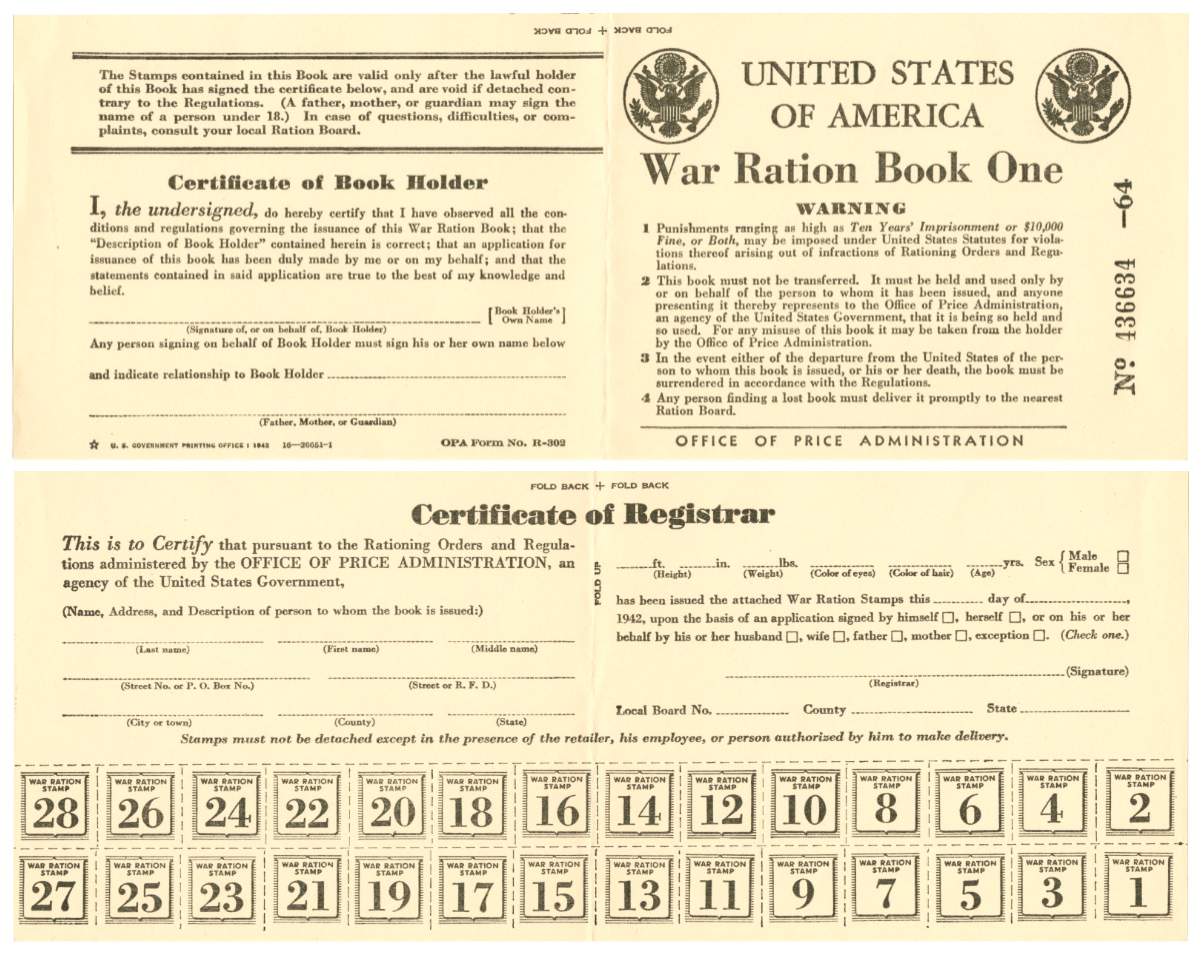
War Ration Book One, initially issued to ration sugar. Stamps #19–28 were later designated for coffee. (Duke University Libraries, David M. Rubenstein Rare Book & Manuscript Collection, Collection: Ration Coupons on the Home Front, 1942–1945, ark:/87924/r3930p504)
The wartime rationing regulations cut the amount of coffee available to consumers to about half of what they had been used to. Instead of 20 pounds or so per year, a consumer could now buy the pro-rated equivalent of 10.5 pounds.
The OPA set up 8,000 rationing boards nationwide and administered the restrictions through ration books and tokens. The agency issued 123 million copies of War Ration Book One for sugar rations in May 1942. When coffee rationing was required in November, stamps #19–28 in War Ration Book One were designated as coffee ration stamps. Each stamp entitled a consumer (over 15 years of age) to one pound of coffee and was valid for five weeks.
Rationing made coffee available to all citizens on an equal basis, while giving priority to the needs of the military. The government promoted rationing as a matter of patriotism for “our fighting men and our fighting allies” and fairness for those on the home front. Without rationing, some people would get more than their fair share. Others would not even get what they need.
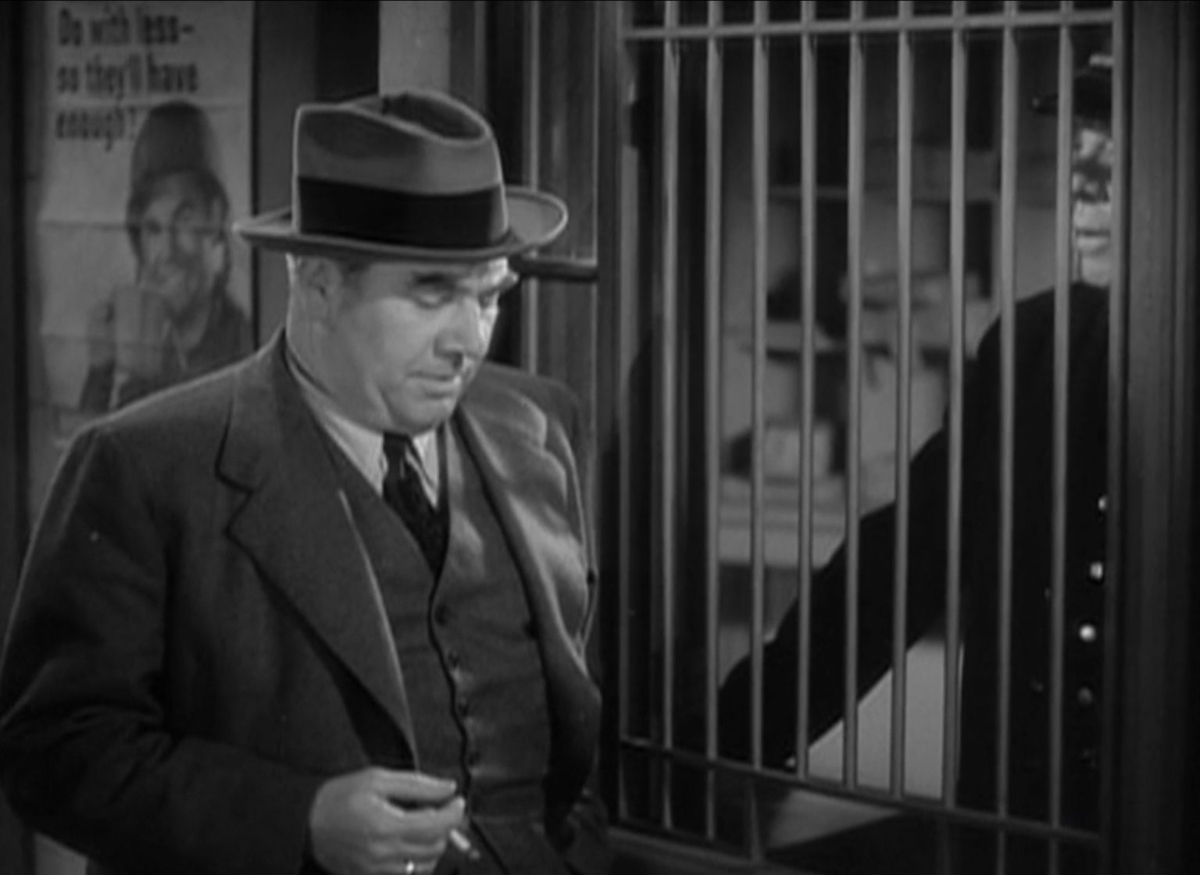
In a scene from the 1944 MGM movie The Thin Man Goes Home, Brogan (Edward Brophy) walks past a “Do with less” coffee rationing poster in Nick Charles’s hometown, Sycamore Springs.
Coping with Coffee Rationing
Although Americans were very supportive of the war effort and the many sacrifices it entailed, coffee rationing was very unpopular. But they did their best to adjust their coffee-drinking habits, both at home and when dining out.
An article in the November 30 issue of Life magazine noted that the reduced availability gave coffee drinkers a choice: either they could drink about half as much good coffee as before, or they could “stretch” their coffee and continue drinking about the same amount.
The article went on to suggest various ways of stretching the coffee. It advised using a level, not heaping, tablespoon of coffee per cup, or adding chicory. To increase the yield, you could boil the coffee on the stove or use a percolator. You could “double-drip” with a drip coffee maker (although the article acknowledged that coffee experts “frowned on” double dripping). When serving coffee, the article suggested filling the cup part way instead of to the brim.
Although it wasn’t one of the suggestions in the Life article, some people “cheated” by serving and drinking their coffee in teacups rather than the larger standard coffee cups.
Coffee shops that formerly offered a “bottomless cup” were now limiting a customer to one cup. One coffee shop featured in the Life article did offer a second cup, but at a price of $100! The article doesn’t say whether any customers accepted that offer.

A wartime poster jokes that the soldiers will have to "fight like hell" to keep up the morale of the folks back home who can't get coffee. War Production Board, Office for Emergency Management. (National Archives at College Park, Public domain, via Wikimedia Commons)
On February 3, 1943, the OPA further reduced the coffee ration, allowing each person one pound every six weeks instead of five. (This would amount to about 8.5 pounds per year.) To preserve supplies, consumers who purchased coffee for their families (and therefore had more than one ration book) were also asked to spread out their coffee purchases over the six-week period instead of obtaining their entire ration at the beginning.
The End of Coffee Rationing
Much to the relief of coffee drinkers, President Roosevelt announced on Jul 28, 1943, that coffee rationing was ending. Coffee was the first of the rationed items to come off the list. Among the rationed foodstuffs, processed foods continued to be rationed until August 1945, and meats, cheese, canned milk, canned fish, and fats were rationed until November 1945. Sugar was rationed until 1947.
Americans’ coffee-drinking habits did not immediately return to pre-war levels, thanks in part to price controls. But coffee drinkers no longer had to “stretch” their coffee. Coffee remained a staple of American life, and it continues to be the second most popular beverage among U.S. adults, trailing only water.
Copyright © Brian Lokker 2013, 2024. This is a revised and expanded version of an article first published in 2013 on CoffeeCrossroads.com. Featured image (cropped) © Eyewave | Dreamstime.com.
For further reading about the home front in World War II, including the rationing of coffee and other commodities, see the excellent and comprehensive series of articles “The American Home Front and World War II,” written by Megan E. Springate of the University of Maryland, and published by the National Park Service.

